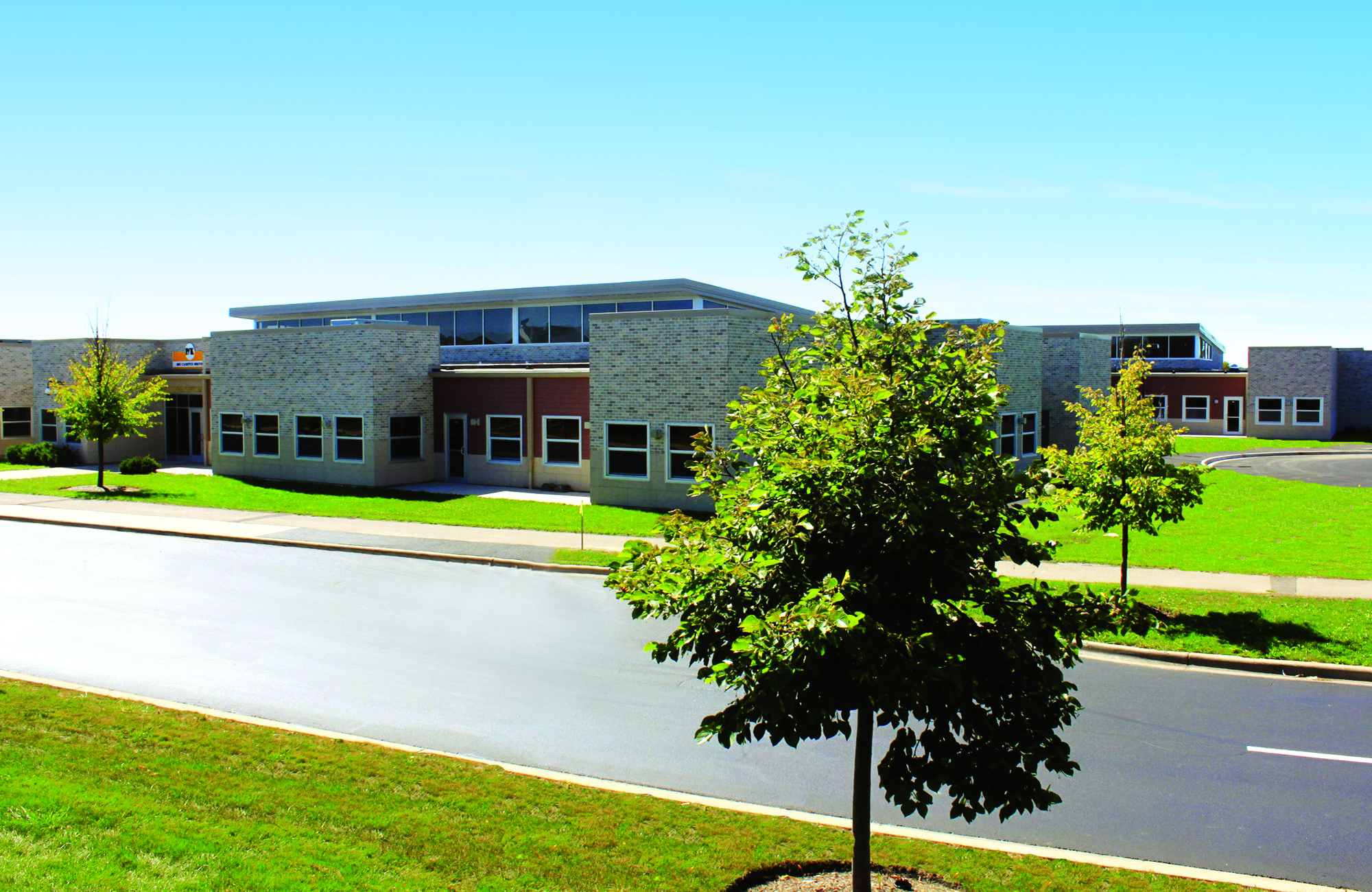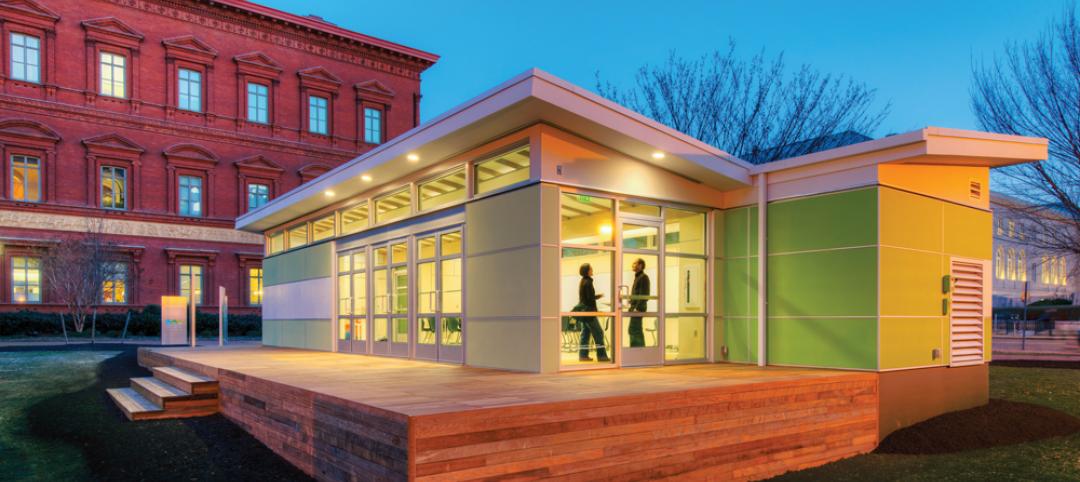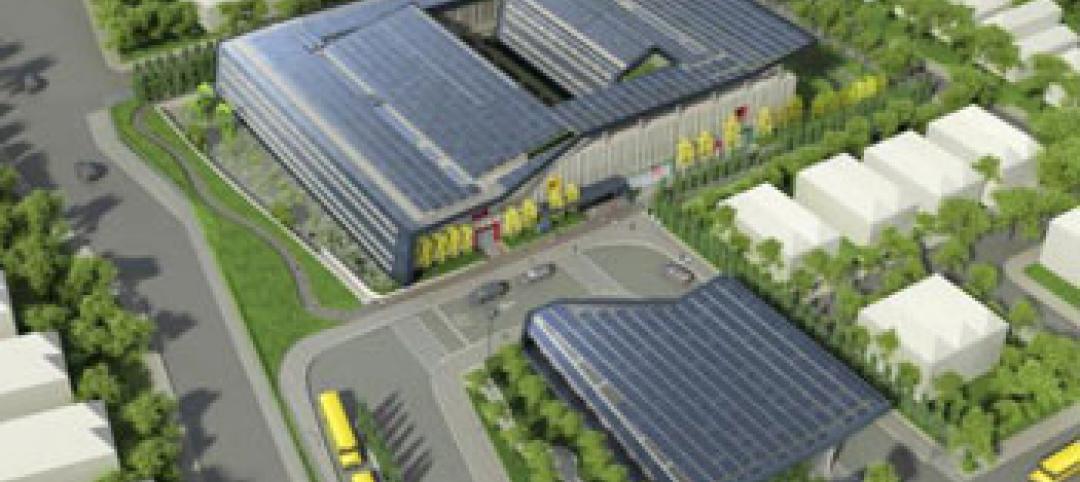Location: Pingree Grove, Ill.
Installation time: 148 days
Size: 19,000 sf
When DRH Cambridge Homes Inc. annexed a planned development with 3,000 homes into Pingree Grove, a small farm village northwest of Chicago, the principal school district needed assistance to meet the growing student population. Cambridge Homes engaged Presidential Services to research a solution that would bring a shorter school creation cycle, reduce costs, and provide space flexibility that would serve a life-long learning commitment for the emerging new village.
The team determined that a combination of site-built and prefabricated components would meet all three criteria, and the research and partnership led to the creation of the Cambridge Lakes Learning Center (CLLC) – a multi-building campus joined by prefabricated corridors – on a 15-acre site within the new development.
The Process
The action plan included opening a K-8 public charter school and a private pre-school within three buildings in the fall of 2007. Whitley Manufacturing was selected to provide the modular portions of the building. After completion of the first phase, Whitley provided both the second and third phase of development – an addition to the third and fourth grade building, and new construction of a seventh and eighth-grade classroom building.
The accelerated delivery schedule of modular construction allowed the school to scale their facilities to match enrollment. In order to keep disruption to the campus to a minimum, the modular units were built in the factory during the spring, with the balance of work occurring over the summer.
Architectural Excellence & Sustainability
Central, steel-structured “kivas” with high ceilings and expansive clerestory windows were site-built, and the modular units were set around this, forming an interior layout designed for flexibility and a visually appealing exterior. To create a modern aesthetic, the steel of the roof system and white-painted galvanized spiral ductwork were exposed. Sustainable acoustical panels above the structural steel created a well-insulated roof system that also reduces sound transmission.
Each classroom was designed with five natural activity centers, offering flexibility for teachers. Daylighting and passive lighting were used to improve efficiency and support active learning in the classroom.
Cost Effectiveness
The building was designed to deliver value through reduction in upfront costs and long-term savings through reduced operating costs delivered by energy-efficient features and systems. The exterior of the building was clad with a uniquely manufactured fiber cement panel product in cut stone, brick, and wide-lap siding finishes that deliver superior performance and durability at a reduced cost. Insulation was increased throughout the building, including the use of structural acoustical panels with integrated rigid insulation above.
Energy efficient, three-phase packaged HVAC units are roof-mounted and screened behind parapets, preserving the exterior aesthetic. Commercial-grade windows and doors with dual pane, Low-E glazing were used throughout the entire structure. Extensive value engineering and close coordination of the project team developed an optimal scope of work that delivered maximum value to the client.
For more information on the project, visit www.whitleyman.com.
 About MBI
About MBI
The Modular Building Institute (MBI) is the international nonprofit trade association serving the modular construction industry. Members are suppliers, manufacturers, and contractors engaged in all aspects of modular projects, from complex multistory solutions to temporary accommodations. As the voice of commercial modular construction, it is MBI's mission to expand the use of off-site construction through innovative construction practices, outreach, and education to the construction community and customers, and recognition of high-quality modular designs and facilities. For more information on modular construction, visit www.modular.org.
Related Stories
| Aug 30, 2013
Modular classrooms gaining strength with school boards
With budget, space needs, and speed-to-market pressures bearing down on school districts, modular classroom assemblies are often a go-to solution.
| Aug 26, 2013
What you missed last week: Architecture billings up again; record year for hotel renovations; nation's most expensive real estate markets
BD+C's roundup of the top construction market news for the week of August 18 includes the latest architecture billings index from AIA and a BOMA study on the nation's most and least expensive commercial real estate markets.
| Aug 22, 2013
Energy-efficient glazing technology [AIA Course]
This course discuses the latest technological advances in glazing, which make possible ever more efficient enclosures with ever greater glazed area.
| Aug 14, 2013
Five projects receive 2013 Educational Facility Design Excellence Award
The American Institute of Architects (AIA) Committee on Architecture for Education (CAE) has selected five educational and cultural facilities for this year’s CAE Educational Facility Design Awards.
| Aug 14, 2013
Green Building Report [2013 Giants 300 Report]
Building Design+Construction's rankings of the nation's largest green design and construction firms.
| Aug 12, 2013
New York’s first net-zero school will be a sustainability lab for city school system
An elementary school on Staten Island will be the first net-zero energy school in New York City and the Northeast. The school is designed to use half the energy of a typical New York public school. Construction will be completed in 2015.
| Jul 29, 2013
2013 Giants 300 Report
The editors of Building Design+Construction magazine present the findings of the annual Giants 300 Report, which ranks the leading firms in the AEC industry.
| Jul 22, 2013
School officials and parents are asking one question: Can design prevent another Sandy Hook? [2013 Giants 300 Report]
The second deadliest mass shooting by a single person in U.S. history galvanizes school officials, parents, public officials, and police departments, as they scrambled to figure out how to prevent a similar incident in their communities.
| Jul 22, 2013
Top K-12 School Sector Construction Firms [2013 Giants 300 Report]
Gilbane, Balfour Beatty, Turner top Building Design+Construction's 2013 ranking of the largest K-12 school sector contractors and construction management firms in the U.S.
| Jul 22, 2013
Top K-12 School Sector Engineering Firms [2013 Giants 300 Report]
AECOM, URS, STV top Building Design+Construction's 2013 ranking of the largest K-12 school sector engineering and engineering/architecture firms in the U.S.















